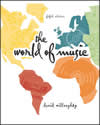Chapter 7 American Popular Music America’s commercial, popular music from Tin Pan Alley to
the Nashville Sound, the Motown Sound, rock and roll, and rap The major styles of contemporary and historical popular music are presented to help readers become more knowledgeable about American commercial, vernacular music. Popular music is defined, its roots are discussed, major style classifications are identified, and its most influential artists are introduced. Because of the ephemeral nature of popular taste and the general public awareness of styles and artists that are currently popular, the discussion in this chapter emphasizes historical developments but also includes brief discussions of various contemporary styles and trends. Just as the author had to choose from among styles and artists, each reader and listener can also decide what singer, group, or even style is most representative of recent pop or rock music—a particularly difficult task given the diversity of styles and multiplicity of artists popular at any one time. This chapter explores the sources and influences of early American popular songs; the minstrel song, presented as the first characteristically American popular music genre; Tin Pan Alley, the first phase of the modern music industry; the development of network radio and the expansion of the recording industry in the 1920s and 1930s, making popular music big business; hillbilly and bluegrass being transformed from regional ethnic musics to commercially successful styles that have become popular nationally; the widening popularity of black popular music, originally intended only for black audiences; and the shift of rock and roll from a rebellious, anti-establishment youth music to rock, a commercial music created to appeal to and be bought by the largest number of people. Although world music is mentioned here only briefly, reggae, salsa, and other styles of American ethnic popular music are presented in chapter 8 and popular music in eastern Europe, Africa, Indonesia, and India are discussed in chapter 9. Goals for Listening - Recognize styles of individuals and groups
- Refine understanding of skills related to previously presented concepts
|



 2003 McGraw-Hill Higher Education
2003 McGraw-Hill Higher Education